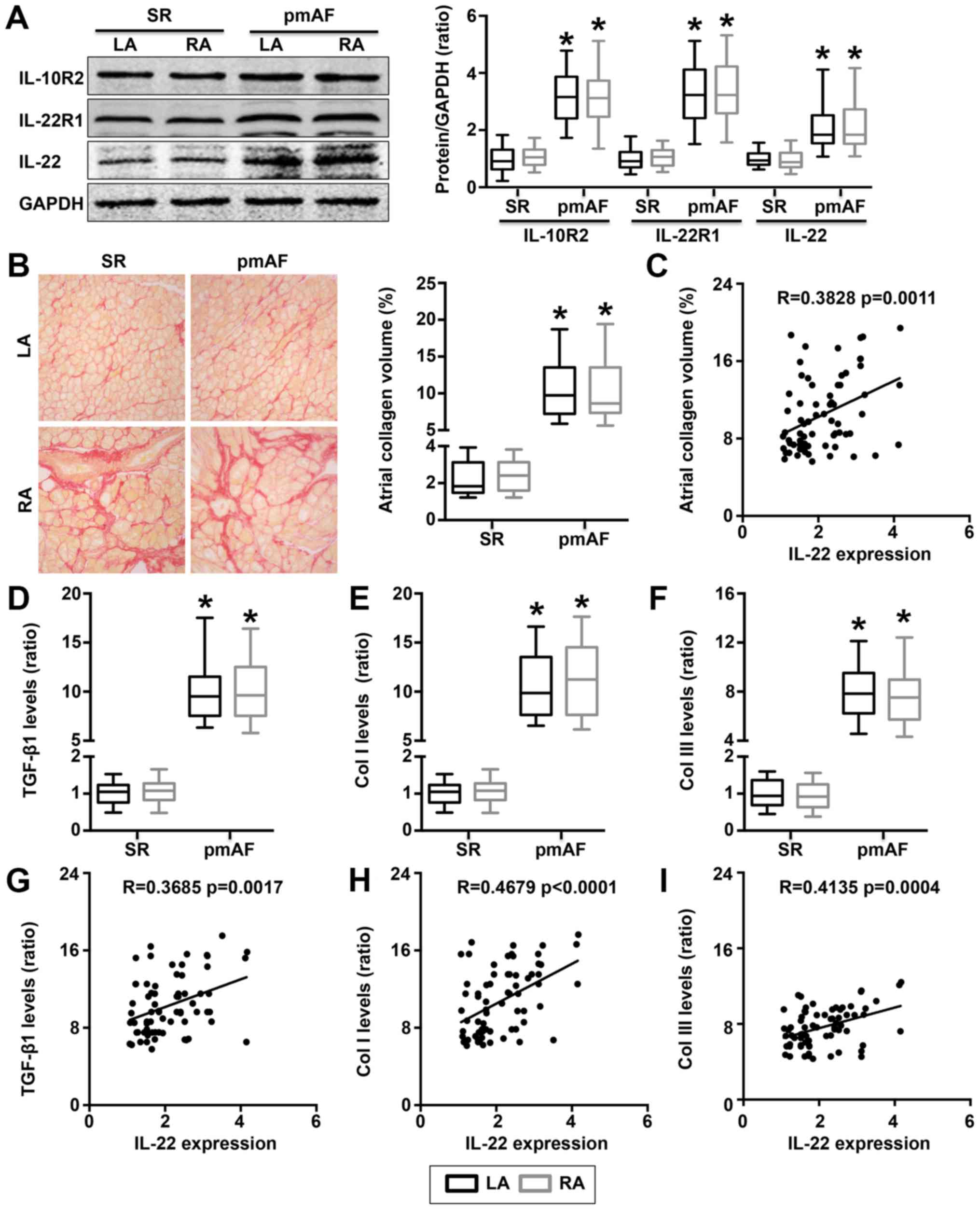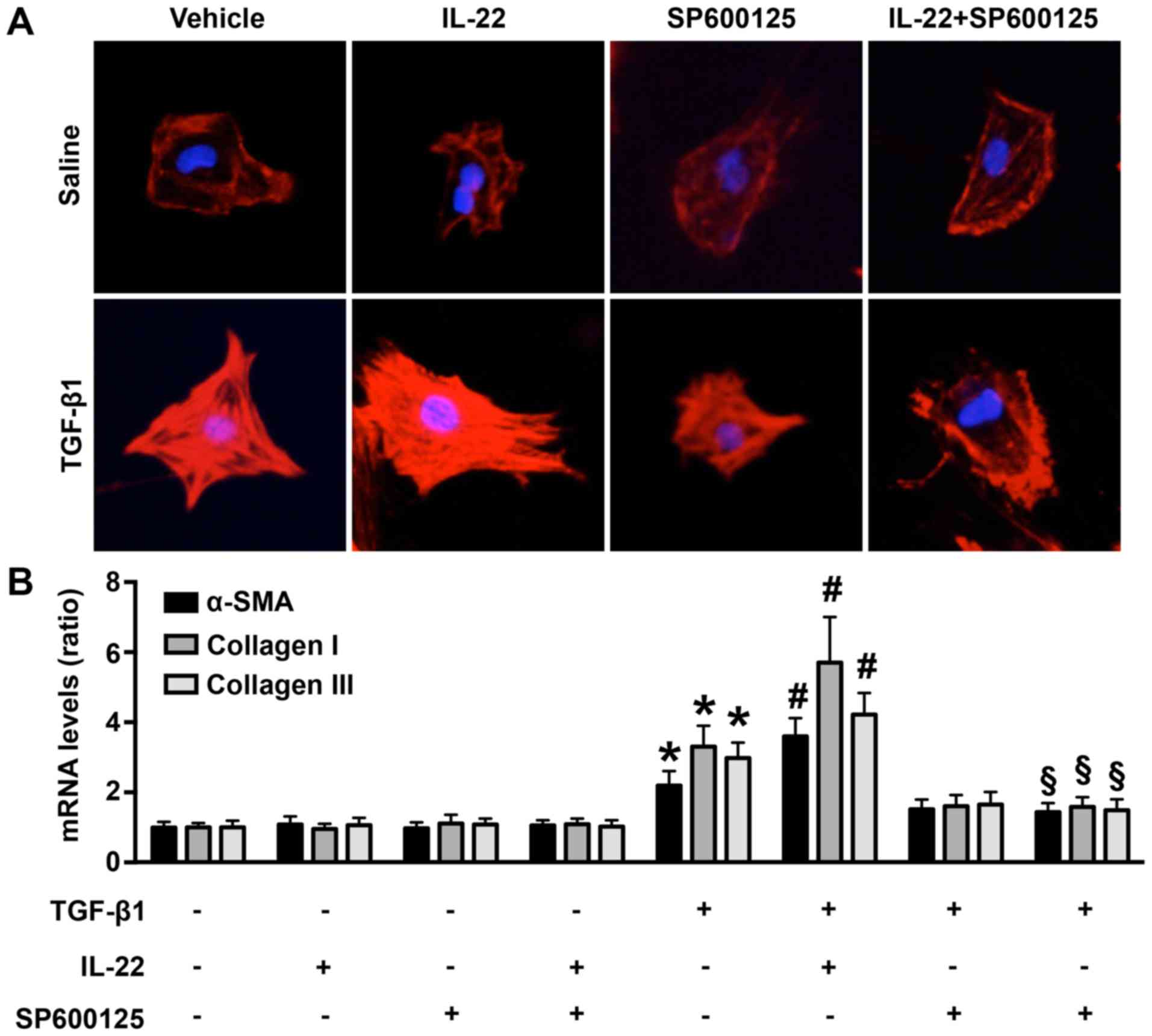|
1
|
Miyasaka Y, Barnes ME, Gersh BJ, Cha SS,
Bailey KR, Abhayaratna WP, Seward JB and Tsang TS: Secular trends
in incidence of atrial fibrillation in Olmsted County, Minnesota,
1980 to. 2000, and implications on the projections for future
prevalence. Circulation. 114:119–125. 2006.PubMed/NCBI View Article : Google Scholar
|
|
2
|
Magnani JW, Rienstra M, Lin H, Sinner MF,
Lubitz SA, McManus DD, Dupuis J, Ellinor PT and Benjamin EJ: Atrial
fibrillation: Current knowledge and future directions in
epidemiology and genomics. Circulation. 124:1982–1993.
2011.PubMed/NCBI View Article : Google Scholar
|
|
3
|
Wang TJ, Larson MG, Levy D, Vasan RS, Leip
EP, Wolf PA, D'Agostino RB, Murabito JM, Kannel WB and Benjamin EJ:
Temporal relations of atrial fibrillation and congestive heart
failure and their joint influence on mortality: The Framingham
Heart Study. Circulation. 107:2920–2925. 2003.PubMed/NCBI View Article : Google Scholar
|
|
4
|
Olsson LG, Swedberg K, Ducharme A, Granger
CB, Michelson EL, McMurray JJ, Puu M, Yusuf S and Pfeffer MA: CHARM
Investigators. Atrial fibrillation and risk of clinical events in
chronic heart failure with and without left ventricular systolic
dysfunction: Results from the Candesartan in Heart
failure-Assessment of Reduction in Mortality and morbidity (CHARM)
program. J Am Coll Cardiol. 47:1997–2004. 2006.PubMed/NCBI View Article : Google Scholar
|
|
5
|
Iscan S, Eygi B, Besir Y, Yurekli I, Cakir
H, Yilik L, Gokalp O and Gurbuz A: Inflammation, atrial
fibrillation and cardiac surgery: Current medical and invasive
approaches for the treatment of atrial fibrillation. Curr Pharm
Des. 24:310–322. 2018.PubMed/NCBI View Article : Google Scholar
|
|
6
|
Gungor B, Ekmekci A, Arman A, Ozcan KS,
Ucer E, Alper AT, Calik N, Yilmaz H, Tezel T, Coker A and Bolca O:
Assessment of interleukin-1 gene cluster polymorphisms in lone
atrial fibrillation: New insight into the role of inflammation in
atrial fibrillation. Pacing Clin Electrophysiol. 36:1220–1227.
2013.PubMed/NCBI View Article : Google Scholar
|
|
7
|
Rizos I, Tsiodras S, Rigopoulos AG,
Dragomanovits S, Kalogeropoulos AS, Papathanasiou S, Sakadakis EA
and Kremastinos DT: Interleukin-2 serum levels variations in recent
onset atrial fibrillation are related with cardioversion outcome.
Cytokine. 40:157–164. 2007.PubMed/NCBI View Article : Google Scholar
|
|
8
|
Gaudino M, Andreotti F, Zamparelli R, Di
Castelnuovo A, Nasso G, Burzotta F, Iacoviello L, Donati MB,
Schiavello R, Maseri A and Possati G: The -174G/C interleukin-6
polymorphism influences postoperative interleukin-6 levels and
postoperative atrial fibrillation. Is atrial fibrillation an
inflammatory complication? Circulation. 108 (Suppl 1):II195–II199.
2003.PubMed/NCBI View Article : Google Scholar
|
|
9
|
Fu XX, Zhao N, Dong Q, Du LL, Chen XJ, Wu
QF, Cheng X, Du YM and Liao YH: Interleukin-17A contributes to the
development of post-operative atrial fibrillation by regulating
inflammation and fibrosis in rats with sterile pericarditis. Int J
Mol Med. 36:83–92. 2015.PubMed/NCBI View Article : Google Scholar
|
|
10
|
Xu L, Wang N, Liang Y, Zhou H and Yan J:
Interleukin-17A contributes to atrial fibrillation recurrence and
left atrial reservoir function after catheter ablation. Pol Arch
Intern Med. 129:432–435. 2019.PubMed/NCBI View Article : Google Scholar
|
|
11
|
Chen Y, Zeng J, Zhang R, Zeng L, Li Y, Wei
H and Yang Q: Effect of interleukin-27 genetic variants on atrial
fibrillation susceptibility. Genet Test Mol Biomarkers. 21:97–101.
2017.PubMed/NCBI View Article : Google Scholar
|
|
12
|
Ki SH, Park O, Zheng M, Morales-Ibanez O,
Kolls JK, Bataller R and Gao B: Interleukin-22 treatment
ameliorates alcoholic liver injury in a murine model of
chronic-binge ethanol feeding: Role of signal transducer and
activator of transcription 3. Hepatology. 52:1291–1300.
2010.PubMed/NCBI View Article : Google Scholar
|
|
13
|
Mo R, Lai R, Lu J, Zhuang Y, Zhou T, Jiang
S, Ren P, Li Z, Cao Z, Liu Y, et al: Enhanced autophagy contributes
to protective effects of IL-22 against acetaminophen-induced liver
injury. Theranostics. 8:4170–4180. 2018.PubMed/NCBI View Article : Google Scholar
|
|
14
|
Perriard G, Mathias A, Enz L, Canales M,
Schluep M, Gentner M, Schaeren-Wiemers N and Du Pasquier RA:
Interleukin-22 is increased in multiple sclerosis patients and
targets astrocytes. J Neuroinflammation. 12(119)2015.PubMed/NCBI View Article : Google Scholar
|
|
15
|
Dudakov JA, Hanash AM and van den Brink
MR: Interleukin-22: Immunobiology and pathology. Annu Rev Immunol.
33:747–785. 2015.PubMed/NCBI View Article : Google Scholar
|
|
16
|
Ye J, Ji Q, Liu J, Liu L, Huang Y, Shi Y,
Shi L, Wang M, Liu M, Feng Y, et al: Interleukin-22 promotes blood
pressure elevation and endothelial dysfunction in angiotensin
II-treated mice. J Am Heart Assoc. 6(005875)2017.PubMed/NCBI View Article : Google Scholar
|
|
17
|
Ye J, Liu L, Ji Q, Huang Y, Shi Y, Shi L,
Liu J, Wang M, Xu Y, Jiang H, et al:
Anti-interleukin-22-neutralizing antibody attenuates angiotensin
II-induced cardiac hypertrophy in mice. Mediators Inflamm.
2017(5635929)2017.PubMed/NCBI View Article : Google Scholar
|
|
18
|
Ye J, Wang M, Jiang H, Ji Q, Huang Y, Liu
J, Zeng T, Xu Y, Wang Z, Lin Y and Wan J: Increased levels of
interleukin-22 in thoracic aorta and plasma from patients with
acute thoracic aortic dissection. Clin Chim Acta. 486:395–401.
2018.PubMed/NCBI View Article : Google Scholar
|
|
19
|
Ye J, Wang Y, Wang Z, Ji Q, Huang Y, Zeng
T, Hu H, Ye D, Wan J and Lin Y: Circulating Th1, Th2, Th9, Th17,
Th22, and Treg levels in aortic dissection patients. Mediators
Inflamm. 2018(5697149)2018.PubMed/NCBI View Article : Google Scholar
|
|
20
|
Rattik S, Hultman K, Rauch U, Söderberg
I, Sundius L, Ljungcrantz I, Hultgårdh-Nilsson A, Wigren M,
Björkbacka H, Fredrikson GN and Nilsson J: IL-22 affects smooth
muscle cell phenotype and plaque formation in apolipoprotein E
knockout mice. Atherosclerosis. 242:506–514. 2015.PubMed/NCBI View Article : Google Scholar
|
|
21
|
Kong Q, Xue Y, Wu W, Yang F, Liu Y, Gao M,
Lai W and Pan X: IL-22 exacerbates the severity of CVB3-induced
acute viral myocarditis in IL-17A-deficient mice. Mol Med Rep.
7:1329–1335. 2013.PubMed/NCBI View Article : Google Scholar
|
|
22
|
January CT, Wann LS, Alpert JS, Calkins H,
Cigarroa JE, Cleveland JC Jr, Conti JB, Ellinor PT, Ezekowitz MD,
Field ME, et al: 2014 AHA/ACC/HRS guideline for the management of
patients with atrial fibrillation: A report of the American College
of Cardiology/American Heart Association Task Force on Practice
Guidelines and the Heart Rhythm Society. J Am Coll Cardiol.
64:e1–e76. 2014.PubMed/NCBI View Article : Google Scholar
|
|
23
|
Works MG, Yin F, Yin CC, Yiu Y, Shew K,
Tran TT, Dunlap N, Lam J, Mitchell T, Reader J, et al: Inhibition
of TYK2 and JAK1 ameliorates imiquimod-induced psoriasis-like
dermatitis by inhibiting IL-22 and the IL-23/IL-17 axis. J Immunol.
193:3278–3287. 2014.PubMed/NCBI View Article : Google Scholar
|
|
24
|
Guillemot L and Citi S: Cingulin regulates
claudin-2 expression and cell proliferation through the small
GTPase RhoA. Mol Biol Cell. 17:3569–3577. 2006.PubMed/NCBI View Article : Google Scholar
|
|
25
|
Livak KJ and Schmittgen TD: Analysis of
relative gene expression data using real-time quantitative PCR and
the 2(-Delta Delta C(T)) method. Methods. 25:402–408.
2001.PubMed/NCBI View Article : Google Scholar
|
|
26
|
Ma ZG, Yuan YP, Zhang X, Xu SC, Wang SS
and Tang QZ: Piperine attenuates pathological cardiac fibrosis Via
PPAR-γ/AKT pathways. EBioMedicine. 18:179–187. 2017.PubMed/NCBI View Article : Google Scholar
|
|
27
|
Kong Q, Wu W, Yang F, Liu Y, Xue Y, Gao M,
Lai W, Pan X, Yan Y, Pang Y and Deng Y: Increased expressions of
IL-22 and Th22 cells in the coxsackievirus B3-induced mice acute
viral myocarditis. Virol J. 9(232)2012.PubMed/NCBI View Article : Google Scholar
|
|
28
|
Guo Y, Wu W, Cen Z, Li X, Kong Q and Zhou
Q: IL-22-producing Th22 cells play a protective role in
CVB3-induced chronic myocarditis and dilated cardiomyopathy by
inhibiting myocardial fibrosis. Virol J. 11(230)2014.PubMed/NCBI View Article : Google Scholar
|
|
29
|
Lin YZ, Wu BW, Lu ZD, Huang Y, Shi Y, Liu
H, Liu L, Zeng QT, Wang X and Ji QW: Circulating Th22 and Th9
levels in patients with acute coronary syndrome. Mediators Inflamm.
2013(635672)2013.PubMed/NCBI View Article : Google Scholar
|
|
30
|
Dong Z, Lin C, Liu Y, Jin H, Wu H, Li Z,
Sun L, Zhang L, Hu X, Wei Y, et al: Upregulation of sestrins
protect atriums against oxidative damage and fibrosis in human and
experimental atrial fibrillation. Sci Rep. 7(46307)2017.PubMed/NCBI View Article : Google Scholar
|
|
31
|
Rosenberg JH, Werner JH, Plitt GD, Noble
VV, Spring JT, Stephens BA, Siddique A, Merritt-Genore HL, Moulton
MJ and Agrawal DK: Immunopathogenesis and biomarkers of recurrent
atrial fibrillation following ablation therapy in patients with
preexisting atrial fibrillation. Expert Rev Cardiovasc Ther.
17:193–207. 2019.PubMed/NCBI View Article : Google Scholar : 30. Jalife J and
Kaur K: Atrial remodeling, fibrosis, and atrial fibrillation.
Trends Cardiovasc Med 25: 475-484, 2015.
|
|
32
|
Thomas L and Abhayaratna WP: Left atrial
reverse remodeling: Mechanisms, evaluation, and clinical
significance. JACC Cardiovasc Imaging. 10:65–77. 2017.PubMed/NCBI View Article : Google Scholar
|
|
33
|
Ali RL, Hakim JB, Boyle PM, Zahid S,
Sivasambu B, Marine JE, Calkins H, Trayanova NA and Spragg DD:
Arrhythmogenic propensity of the fibrotic substrate after AF
ablation: A longitudinal study using MRI-based atrial models.
Cardiovasc Res. 115:1757–1765. 2019.PubMed/NCBI View Article : Google Scholar
|
|
34
|
Chang SH, Yeh YH, Lee JL, Hsu YJ, Kuo CT
and Chen WJ: Transforming growth factor-β-mediated CD44/STAT3
signaling contributes to the development of atrial fibrosis and
fibrillation. Basic Res Cardiol. 112(58)2017.PubMed/NCBI View Article : Google Scholar
|
|
35
|
Cochet H, Dubois R, Yamashita S, Al
Jefairi N, Berte B, Sellal JM, Hooks D, Frontera A, Amraoui S,
Zemoura A, et al: Relationship between fibrosis detected on late
gadolinium-enhanced cardiac magnetic resonance and re-entrant
activity assessed with electrocardiographic imaging in human
persistent atrial fibrillation. JACC Clin Electrophysiol. 4:17–29.
2018.PubMed/NCBI View Article : Google Scholar
|
|
36
|
Qu X, Chen L, Sun L, Chen C, Gao Z, Huang
W and Zhou H: Serum relaxin level predicts recurrence of atrial
fibrillation after radiofrequency catheter ablation. Heart Vessels.
34:1543–1551. 2019.PubMed/NCBI View Article : Google Scholar
|
|
37
|
Rolla S, Alchera E, Imarisio C, Bardina V,
Valente G, Cappello P, Mombello C, Follenzi A, Novelli F and Carini
R: The balance between IL-17 and IL-22 produced by
liver-infiltrating T-helper cells critically controls NASH
development in mice. Clin Sci (Lond). 130:193–203. 2016.PubMed/NCBI View Article : Google Scholar
|












